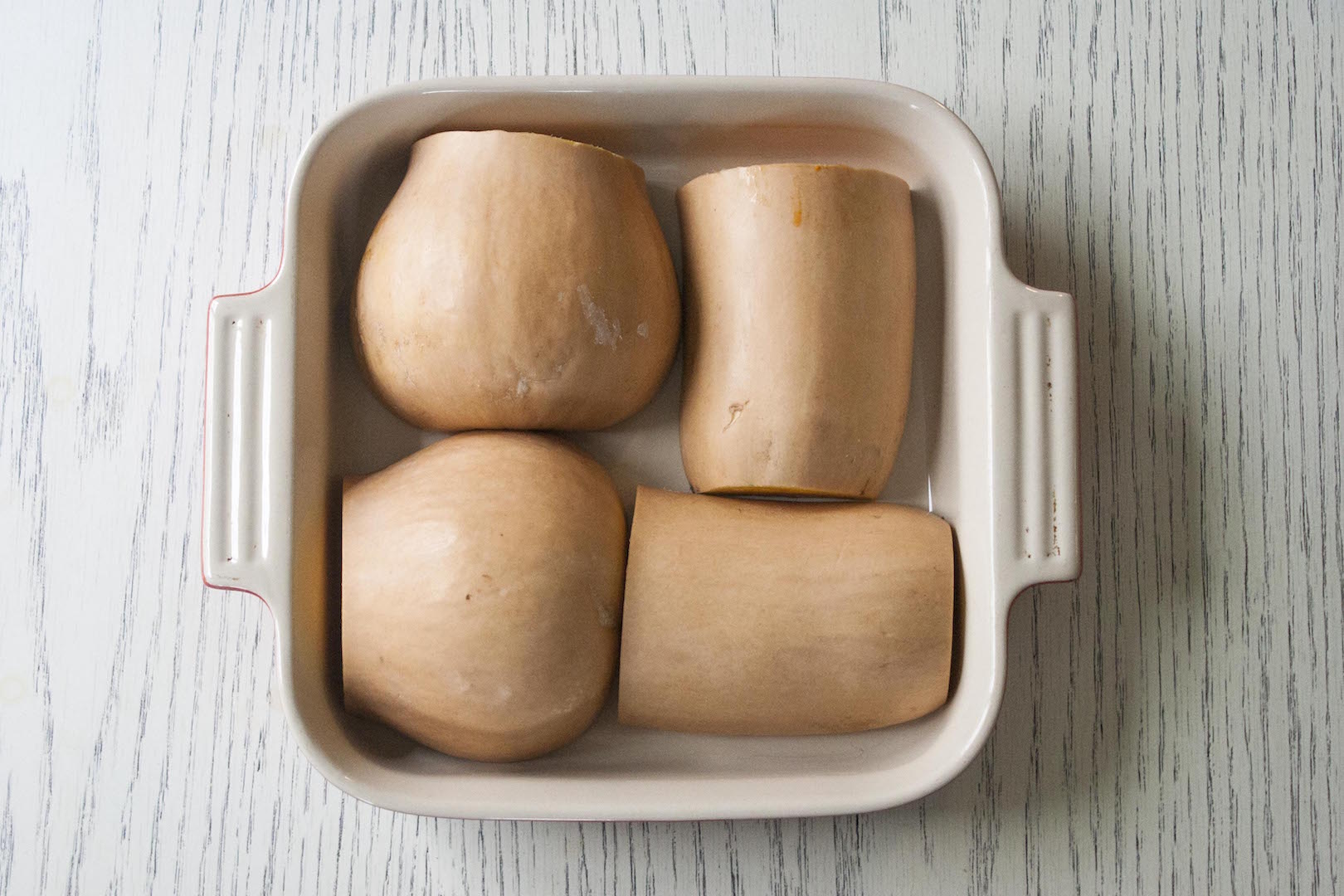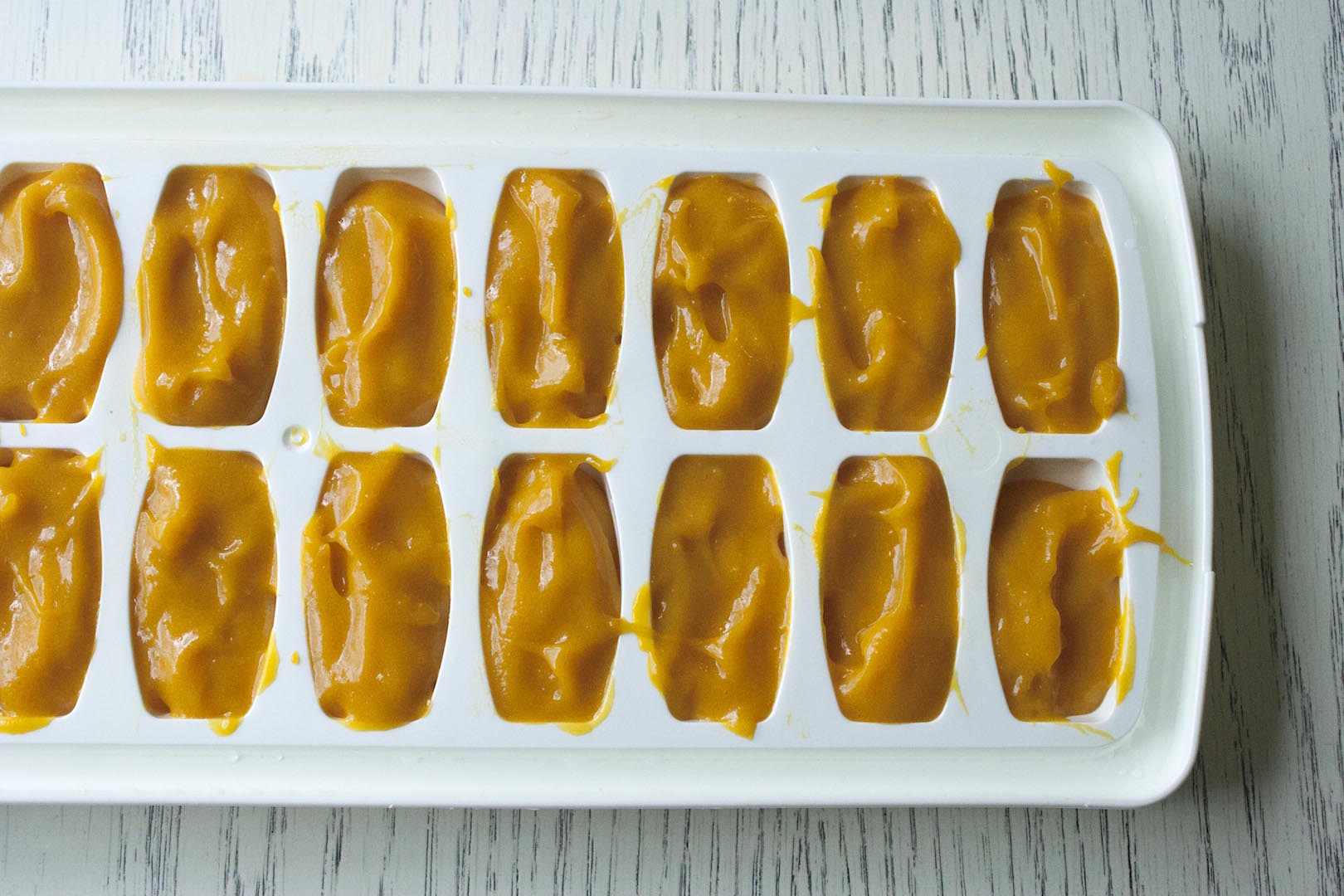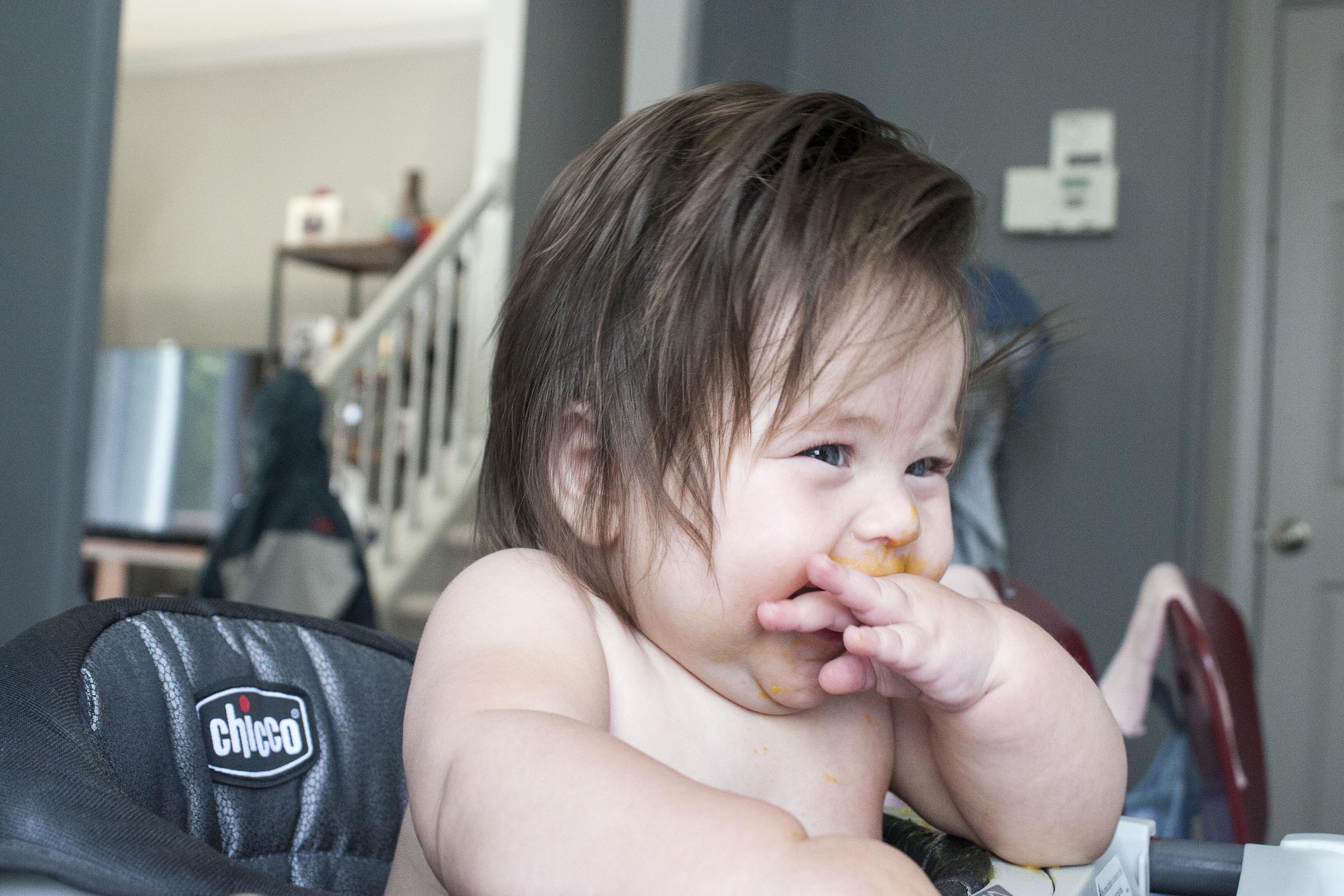 Before we had our first child, I spent a lot of time scanning the aisles of the baby stores, trying to decide which dice/steam/puree contraption I was going to buy. But, one day, on what was probably our fourth trip, I realized: I didn’t want any more gadgets. On our registry was a pump, a bottle warmer, a thermometer for the bathtub, two types of thermometers for the baby, a humidifier and the list went on and on and on.
Before we had our first child, I spent a lot of time scanning the aisles of the baby stores, trying to decide which dice/steam/puree contraption I was going to buy. But, one day, on what was probably our fourth trip, I realized: I didn’t want any more gadgets. On our registry was a pump, a bottle warmer, a thermometer for the bathtub, two types of thermometers for the baby, a humidifier and the list went on and on and on.
Also, I already owned pots, an oven, a food processor, a mini food processor and a blender. So, while I have nothing against any of the machines offered, I decided to go it, alone, acknowledging that I would reserve the right to change my mind. I didn’t.
Cooking for my daughter was so much easier and less time consuming than I imagined. Basically, when I was already in the kitchen, taking care of other things, I’d throw a fruit into the oven or steam a vegetable. (Truthfully, the most annoying part to me is remembering to pop the little cubes out of the freezer containers and clean them, to make sure they’re ready the next time I need them.)
After beginning with avocado, which was a simple blend-until-smooth job, butternut squash was the second food offered to both of our daughters. When Larry and I are eating it, I typically toss the cubes with olive oil, salt and pepper, but for the babies’ first times, straight squash was the way to go.
I chose a small squash, out of practicality. First, cutting a large, unwieldy squash is not fun and often, dangerous (in my kitchen). Secondly, while I want to get enough final product to make the process worth it, I also don’t want to be left with 36 cubes of squash if the baby isn’t interested.
 Rather than dealing with a peeler, which we all know barely dents a winter squash, we quartered it, scooped out the seeds and cooked the whole thing, skin still on. I was using the stove and the oven was already on, so I puzzled the pieces together, added water and roasted until soft. Once it was cool enough to handle, it was easy to scoop the flesh, add to the blender with water and puree.
Rather than dealing with a peeler, which we all know barely dents a winter squash, we quartered it, scooped out the seeds and cooked the whole thing, skin still on. I was using the stove and the oven was already on, so I puzzled the pieces together, added water and roasted until soft. Once it was cool enough to handle, it was easy to scoop the flesh, add to the blender with water and puree.
Reeve’s first food, avocado, was a messy disaster (clothes destroyed) and led to a real obsession with her bib. She didn’t understand what to do with the avocado and made faces that we’d never seen before. I gave her big smiles as we fed her, but she stared me down, unsure and onto me. She stuck her fingers in her mouth and rubbed avocado through her hair.
So, on this, her fourth day of eating, we wised up and stripped her down before setting her into her chair. She looked annoyed as the spoon came toward her, but she didn’t clamp her mouth shut. She ate about a teaspoonful, which was more than she had accepted on the previous days. It was something.
By Reeve’s fourth day of squash, she opened her mouth as the spoon headed her way. She didn’t actively try to get the food out of her mouth. Maybe, she ended up with squash in her hair and her ankles. But, she ate a bit. Slow and steady.

For a list of the other foods we’ve tried so far, visit us here.
- 1 butternut squash (about 1 pound)
- water
- breast milk, formula or additional water
- Heat oven to 400°F.
- Using a large sharp knife and a steady surface, quarter squash. Remove and discard seeds and strings from squash. (If you're feeling particularly industrious, save the seeds to roast for you.)
- Place squash, cut side-down, in a baking dish. Add 1-inch water. Cover with parchment paper or aluminum foil. Roast 30-45 minutes, or until the squash is tender and easily pierced with a knife. Let sit until cool enough to handle.
- Using a spoon, remove squash from skin (discard skin). Place squash in the blender. Add breast milk, formula or water (I like to start with a ratio of 4 parts water to 1 part liquid); blend until completely smooth.
- Divide amongst ice cube trays and a small bowl. (I like to leave enough out for the first three days of eating. Remember to divide the food up before serving - once the spoon touches your babies lips and goes back into the bowl, you need to discard whatever is not eaten in that sitting.) Let cool completely. Cover; freeze 2 hours, or until completely firm. Pop out and store in a freezer safe bag or container. Label with expiration date (3 months from the date you made the squash. Cubes can be thawed overnight. To serve, warm to room temperature (about 8-10 seconds in the microwave.)
Leave a Reply